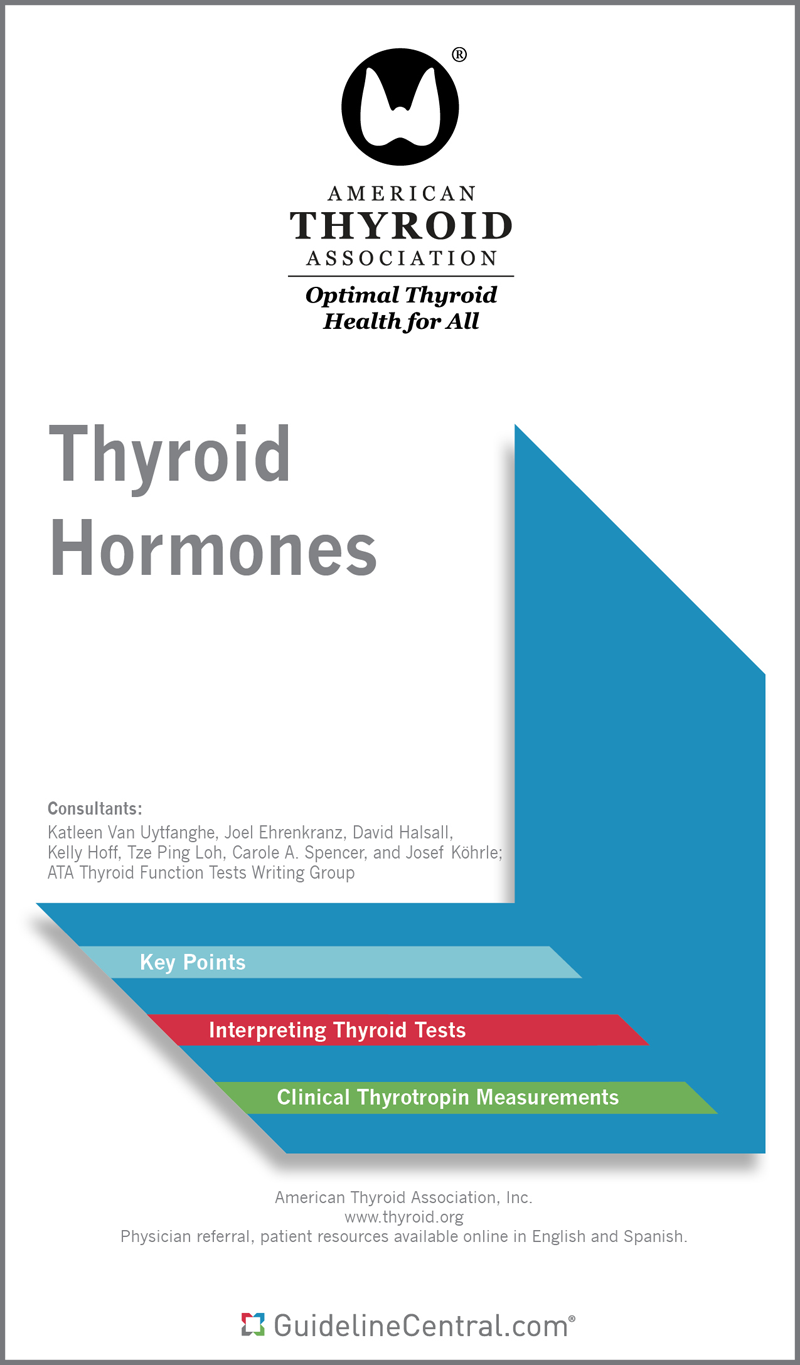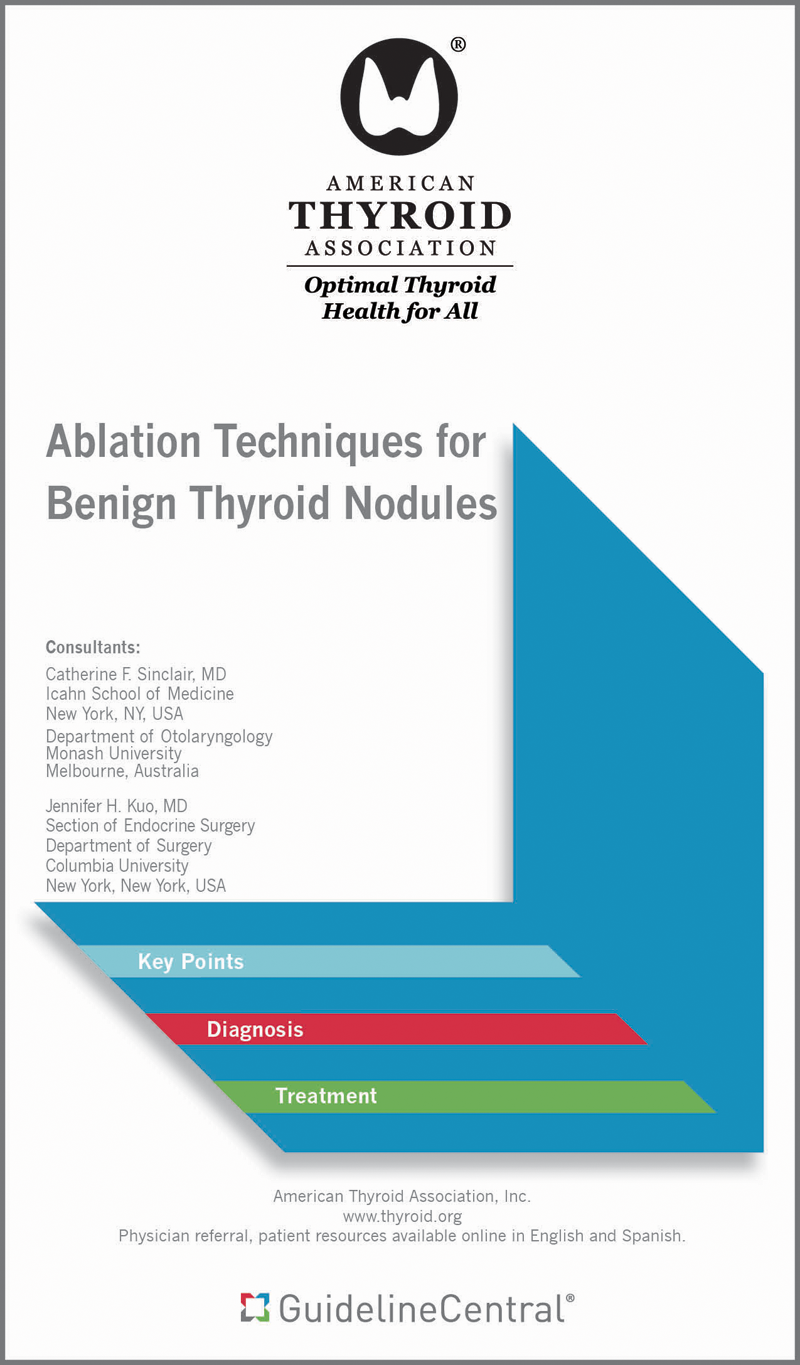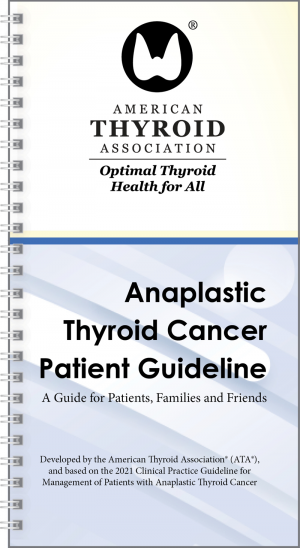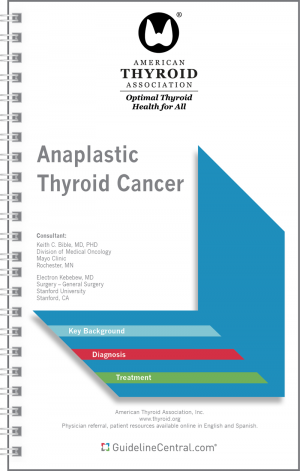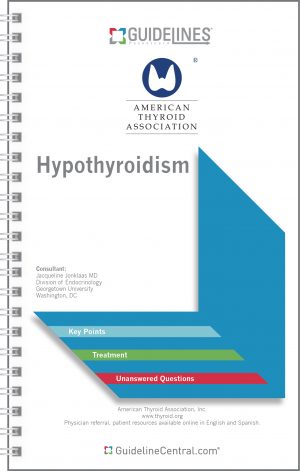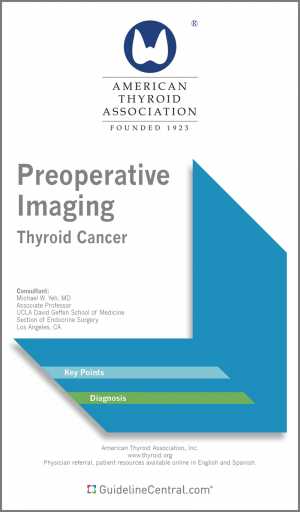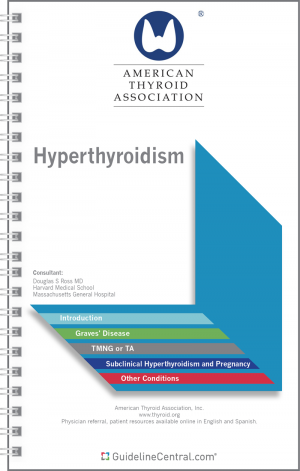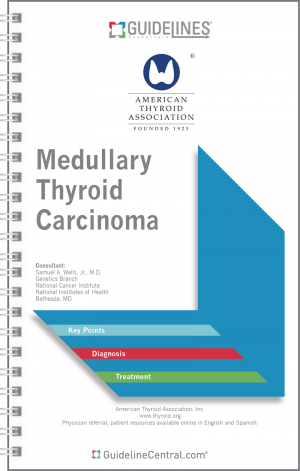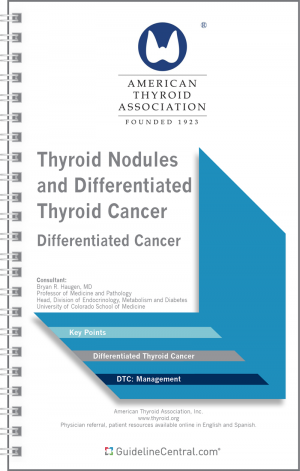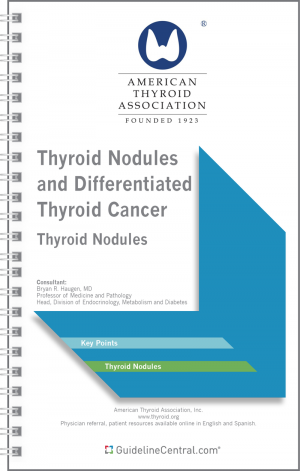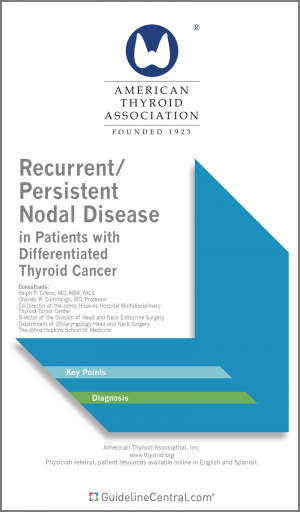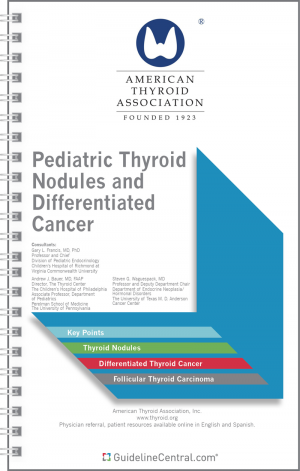Thyroid Disease During Pregnancy
- 20 pages
- Multifold
- 80# Aqueous Coating
- 4.25" x 7.25"
- Ships in 5 – 10 business days
- Key Points
- Assessment Recommendations
- Screening for Thyroid Dysfunction Before or During Pregnancy
- Thyroid Function Testing and Pregnancy
- Iodine Status and Nutrition
- Thyroid Auto-Antibodies & Pregnancy Complications
- The Impact of Thyroid Illness upon Infertility and Assisted Reproduction
- Maternal Disorders
- Hypothyroidism and Pregnancy
- Thyrotoxicosis in Pregnancy
- Thyroid Nodules and Thyroid Cancer During Pregnancy
- Postpartum Thyroiditis
- Fetal and Neonatal Considerations
- Thyroid Disease and Lactation
- Algorithm
- Testing For Thyroid Dysfunction In Pregnancy
- Tables
- Advantages and Disadvantages of Therapeutic Options for Women with Graves’ Disease Seeking Future Pregnancy
- ATA Sonographic Patterns and Estimated Risk of Malignancy for Thyroid Nodules
- For purchases under 100 in quantity, we suggest placing the order directly through the website.
- We offer group/institutional licenses for multi-user accounts (discount amount varies depending on the number of users).
- We are proud to offer special discounts to medical schools, training programs, students and more.
- We offer bulk purchase discounts based on number of copies and number of titles.
Contact Us for more details
Description
This resource is for informational purposes only, intended as a quick-reference tool based on the cited source guideline(s), and should not be used as a substitute for the independent professional judgment of healthcare providers. Practice guidelines are unable to account for every individual variation among patients or take the place of clinician judgment, and the ultimate decision concerning the propriety of any course of conduct must be made by healthcare providers after consideration of each individual patient situation. Guideline Central does not endorse any specific guideline(s) or guideline recommendations and has not independently verified the accuracy hereof. Any use of this resource or any other Guideline Central resources is strictly voluntary.
You can also find this product included in this bundle!


